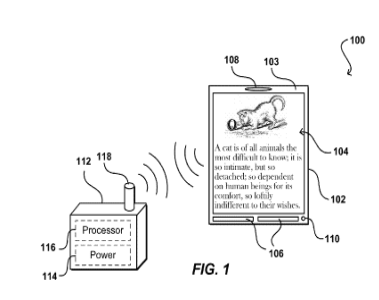
It seems like everyone is trying to jump on the cloud computing bandwagon, but Amazon Chairman and CEO Jeff Bezos wants to take it to a whole new level. GeekWire reports that he and Gregory Hart have filed a patent for "remote displays" that would get data and power from a centrally located "primary station." The tablets or e-readers would simply be screens, and the need for a large internal battery or significant local processing power would theoretically be obviated by the primary station.
The patent sees processors and large internal batteries as the next major roadblocks in the pursuit of thinner and lighter devices. "The ability to continue to reduce the form factor of many of today's devices is somewhat limited, however, as the devices typically include components such as processors and batteries that limit the minimum size and weight of the device. While the size of a battery is continuously getting smaller, the operational or functional time of these smaller batteries is often insufficient for many users."
The full patent is an interesting read, since it presents other potential use cases for these "remote displays" that wouldn't necessarily need to wait on this theoretical fully wireless future-tablet to come to pass. For example: a camera or sensor could detect when a hand is passed over an e-reader display and respond by turning the page. A touch-sensitive casing could detect when a child is handling a display by measuring things like the length and width of their fingers and then disable purchasing of new content or the ability to access "inappropriate" content.
Transferring power and data wirelessly to displays as described in the patent is currently infeasible, but it does present an interesting idea for the future of tablets and e-readers—the latter devices in particular have low bandwidth and power requirements as it is, making them ideal candidates for such an infrastructure.
reader comments
60